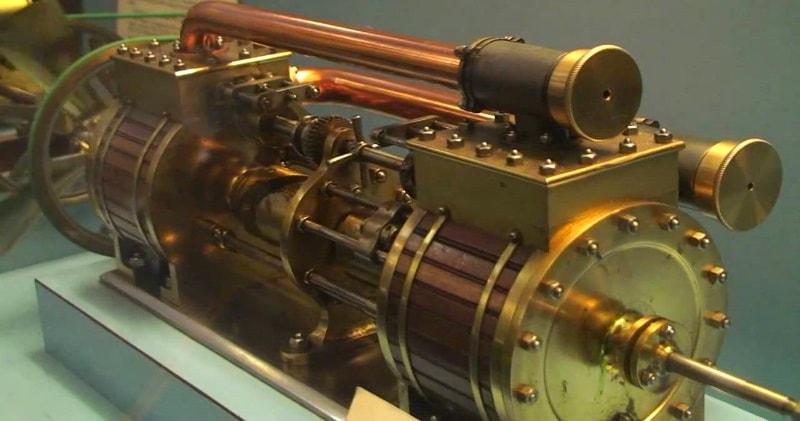This is the authentic demonstration model, constructed in London about 1870 by Mr. George Shott (of Messrs. John Penn and Sons) with the assistance of his two sons George and William Nesbitt Shott to show the operation of his proposed cylindrical-cam form of marine engine.
source/image: harryolynx
The model shows two cylinders 36 in. 91.4 cm diam. by 18 in. 45.7 cm stroke, rated collectively at 156 nominal h.p., and each fitted with two piston rods and side rollers, to run in sine-shaped grooves cut in two cylindrical cams mounted on the screw shaft. Two similar but smaller cams serve to operate the steam admission and exhaust valves.
The screw shaft passes through the center of the after left cylinder and piston, and is shown fitted with a four-bladed bronze screw propeller 7.5 ft.diam. (2.29 m).Besides the problems with thrust and friction of the side rollers exists another drawback.
Advertisement
There is no possibility for the exact timing of steam admission except at full steam, because the amplitude of the steam valves cannot be changed.For changing the direction, you have to twist the valve cam on its shaft. But you can not compare that with the efficiency of a classic valve gear, e.g. Stephenson’s, the standard for ship’s engines at that time.











